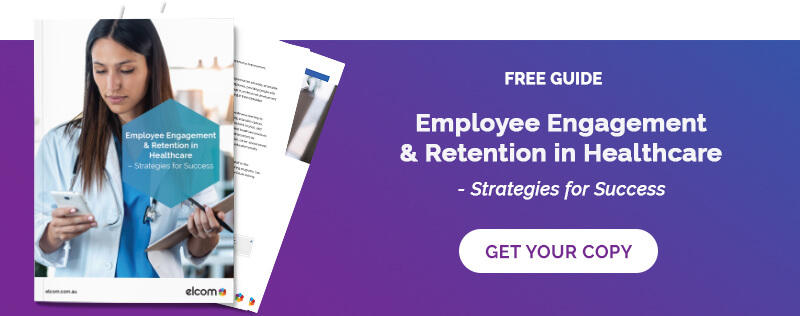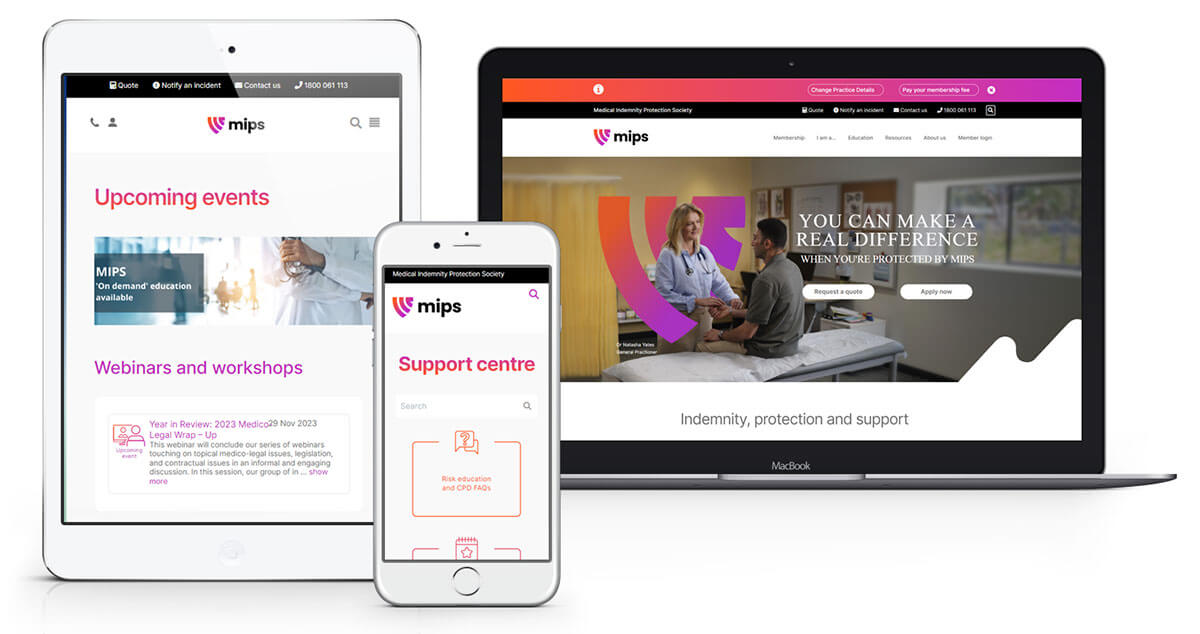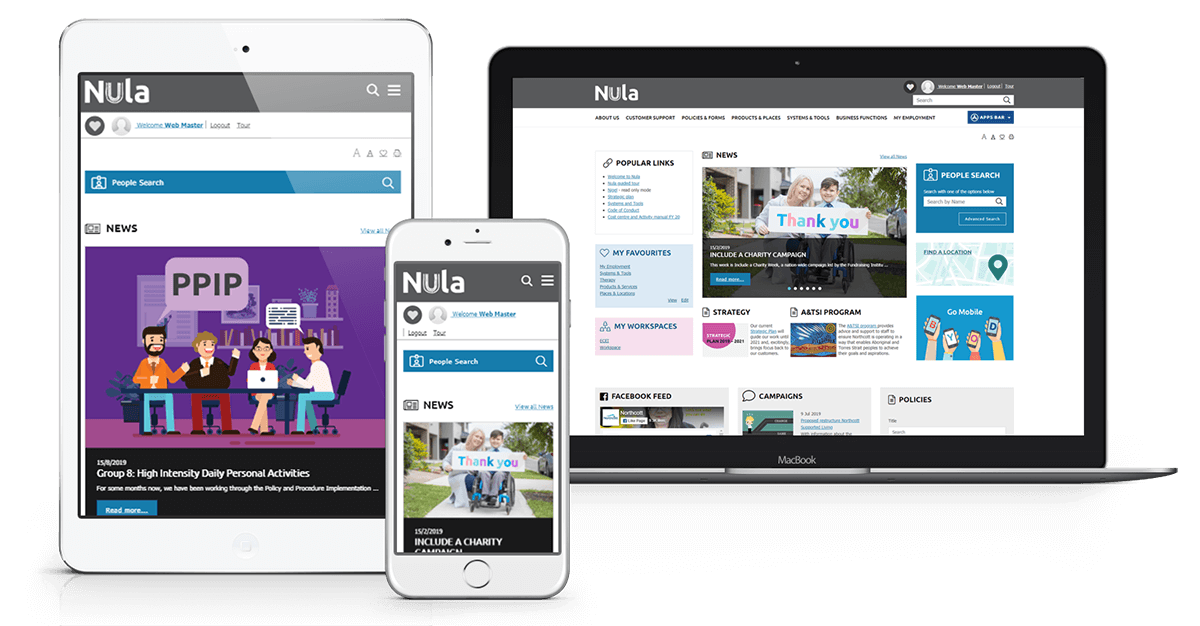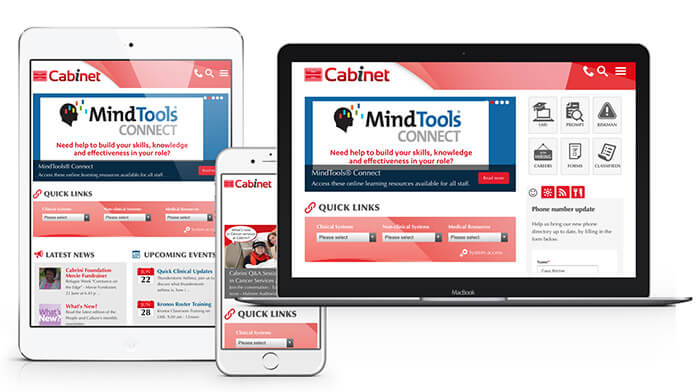It’s amazing to look back and see just how far our world has come technologically.
The same can be said about technology in healthcare. From improved operational efficiency to standards in patient care, the healthcare transformation has enhanced the entire experience for both patients and medical professionals.
The following are eight of the top healthcare technology and healthcare industry trends and innovations that are revolutionising the field.
Top 8 Healthcare Technology Trends And Innovations
Here are the top healthcare technology trends and innovations affecting the industry.
1. Availability of Information and Big Data
The accessibility of data and the means to store and process it is a hallmark of the technological age. The Internet, data capture systems, search features and the ability for healthcare professionals to rapidly share information have enhanced the synthesis and analysis of data.
“Big data” in healthcare allows the entire field to benefit from comprehensive research studies. They can access larger and more diverse population groups than ever before. They can also draw from existing studies for comprehensive meta-analyses.
This innovation allows medical professionals to stay on top of health care trends, techniques and technologies. This can be used to automatically identify risk factors and recommend the right preventative treatment by comparing patient data with data from thousands of other patients, while also reducing costs and improving quality of life in general.
On a smaller scale, data can assist in many ways to improve operations and patient care. For example, Intel worked together with the largest University hospital in Europe to build a solution to predict how many patients are expected to be at their hospitals daily and hourly, using data from four emergency departments. Being able to plan for patient loads allows hospital administration staff effectively organise and allocate resources, helping to reduce patient wait times and improve patient care.
More and more medical professionals are also accessing online business intelligence platforms that help them make more data driven decisions. These platforms house a patient’s medical history and use predictive tools to provide recommendations such as those who are at risk of a particular disease and what preventative steps are needed.
2. Improved Communication
Like all other organisations, healthcare organisations are challenged with ineffective communication between departments, teams and locations. Staff often work in specialised teams with each playing a role in patient care.
Technological innovations in healthcare have facilitated much smoother communication within healthcare organisations. Medical professionals can now use media such as video, online discussion platforms and real-time meeting capacities to communicate and advance the spread of knowledge in the field. Electronic medical records in-house are accessible by all relevant departments and care providers. This results in improved case management, treatments and patient recovery.
Communication between medical and non-medical staff members, particularly those who work in different locations has also benefited significantly from technology mentioned previously.
In addition, there are tools such as intranets aimed directly at this group, such as staff directories which display contact information as well as areas of expertise so colleagues can easily find each other despite working across various sites and in the community.
Related reading: How Intranets Can Benefit Healthcare Delivery
3. Integrated Medical Records
Previously, medical information from visits to the General Practitioner (GP), medical specialist, allied health professionals and the dentists were held in separate locations with different health practitioners and hospitals.
Electronic medical records allow all patient histories, test results, diagnoses and relevant information to be stored centrally in an online location. The data allows for more focused and accurate care as well as the ability to see health trends for each individual. Medical billing systems allow hospitals, clinics and medical practices to run much more smoothly.
A McKinsey report on big data healthcare found that “The integrated system has improved outcomes in cardiovascular disease and achieved an estimated $1 billion in savings from reduced office visits and lab tests.”
4. Accessibility of Healthcare Advice
The internet has become an integral part of our everyday lives, changing the way how we spend our time and how we source information.
Not surprisingly, it has also changed the way patients obtain health information.
The majority of people now look online to find healthcare advice, especially gen z and millennials, which has led to increase in budgets spent on healthcare websites. Government organisations have websites to promote their initiatives including Healthdirect and Better Health Victoria.
Telemedicine/Telehealth services such as video-conferencing are also becoming cost effective ways to complement local health services. During COVID-19, telehealth rose significantly as a means to restrict the transmission of the virus.
According to the ABS, of people who needed to and saw a health professional for their own mental health in 2022-23, 29.3% did so at least once using a telehealth service.
It is particularly beneficial to those living in rural, regional and remote communities and requiring regular access to medical specialists who live several kms away. Generally, you have a GP, other medical practitioners, nurse practitioners, midwives, health workers and practice nurses providing face-to-face clinical services to the patient during the teleconsultation with the specialist to ensure the correct procedures are carried out. These medical professionals can provide personalised treatment plans to help prevent hospitalisation and unnecessary visits. When combined with data analytics and predictive platforms, they can more accurately prevent deteriorating conditions in a patient – all over a video-conferencing platform.
Teleconsultation is also beneficial to health care or other frontline staff on location, as they can receive education and training virtually.
5. Increased Mobility
Mobile software applications (aka mobile apps) are key to improving accessibility for patients and healthcare professionals. Mobile apps enable people to easily manage their health and wellbeing; everything from prompting them to get checkups, to finding general medical information or accessing their test results securely online 24/7 without having to book in an appointment with their GP and wait days for results.
Healthcare professionals on the other hand are rarely in one fixed location. Enabling them to access the intranet from their mobile device or a shared tablet ensures they can quickly access information relating to diseases and drugs, images for clinical matters, continued education activities and so other resources that support their daily work.
6. Centralised Knowledge Repository
Access to accurate resources is critical in the healthcare industry, whether that be patient information, supporting documentation on processes or other staff. Staff are often working in time sensitive roles and need to quickly access information to get back to their frontline duties.
Online document storage and information retrieval ensures staff don’t need to rifle through filing cabinets and drawers to find what they need. The latest version of a resource can be uploaded and easily searched.
Intranets have become popular for providing supporting resources and organisation-wide updates in a convenient and central location aka a single source of truth.
Homepages often highlight critical or important information that links off to additional content.
Other sections can house various department policies and procedures, as well as up-to-date information and printable content on commonly mentioned topics and medical issues to reference and provide to patients and their families. Personalisation can also be put in place, so staff see information specific to their needs, avoiding information clutter.
7. Artificial Intelligence (AI)
The transformative power of generative AI has revolutionised healthcare, specifically within the realm of artificial intelligence (AI) technologies.
AI has the capability to analyse large datasets, identify patterns, and provide valuable insights for diagnosis, treatment plans, and preventive care. By leveraging advanced techniques like deep learning, healthcare providers can access better decision support tools, leading to more informed decisions about patient care and tailored treatments that meet individual needs, ultimately reducing costs associated with ineffective interventions.
AI is extensively employed in diagnostics, where it analyses large datasets of patient health records to identify disease patterns and anomalies in medical images such as CT scans, MRI scans, and X-rays. This enables early disease detection and facilitates timely interventions that may not be possible using traditional methods alone.
Beyond diagnostics, AI in healthcare offers a wide range of applications. It provides actionable insights into patient trends and treatment responses, automates administrative processes, monitors vital signs for early detection of conditions, identifies potential risks in patient care, delivers personalised treatments based on medical history, and offers personalised health advice and lifestyle recommendations.
8. Automated Processes
Healthcare organisations operate within a highly regulated industry. There are countless internal medical and non-medical administration processes and procedures that need to be followed.
Introducing improved workflows for daily processes can save significant time in having staff find or perform what they need to, as well as administration staff who need to maintain and action these. For example, forms can be filled in online by patients. Automated workflows can then be triggered so forms are automatically sent to the appropriate person or people to view, approve and/or process.
Training for new medication or equipment, new organisation-wide processes and procedures or even inductions, can now be delivered online via a learning management system or online training software. This way staff can gain new knowledge and skills they need without having to travel on-site, freeing up travel time so they can focus on their roles.

How Technology Can Transform Digital Services
The positive impact of technology in healthcare is clear. Hospitals that make a digital transition experience all of these benefits of healthcare technology, trends and innovation. Making the move promises a higher calibre of care across the board. Embracing digital healthcare services facilitates:
- Cutting-edge digital platforms
- Improved operational efficiency
- Integrated approach to patient care
- Automated administrative and clinical processes
- Easier collaboration
- Higher HIMSS
- Enhanced capacity for innovation
- Better patient outcomes
- Reduced costs
Elcom brings effective strategies for implementing and integrating new digital solutions seamlessly into your operations. The following are examples that illustrate the benefits of digital healthcare transformation:
The Medical Indemnity Protection Society (MIPS)

Medical Indemnity Protection Society (MIPS) is a nonprofit organisation that provides healthcare students and professionals with support in their practise of medicine. Their website serves 40,000 members. MIPS wished to enhance their online presence through offering online courses and trainings as well as better access to information and membership details.
The Elcom team assisted MIPS by outfitting their website with a strong website CMS system as well as a Training Module for core needs. Their website is now more integrated, streamlined, unified and aligned with their mission statement. The new system has enhanced security and complements the organisation’s existing systems and initiatives. Custom features like dynamic content and SMS reminders were also included as part of their healthcare technology transformation.
Northcott

Northcott is one of Australia’s largest not-for-profit disability service organisations, providing services from 160 metropolitan and regional locations throughout NSW and the ACT.
The main driver for a new intranet came when staff doubled overnight after we acquired over 100 specialist disability accommodation services from the NSW Department of Family and Community Services. These frontline staff members work remotely with customers and couldn’t find critical information.
The new intranet, Nula, provides access to updated policies, online forms and workflows, team workspaces, corporate directory and much more - solving real problems within Northcott. Nula has enabled staff to search for information, policies and people, and find them easily. These basic needs are difficult to meet in an organisation of their size and geographical dispersion.
Cabrini

Cabrini is a private, not-for-profit, Catholic health service providing a comprehensive range of health and health-related services and twelve locations. With more than 4500 end-users representing a wide range of job profiles and professional backgrounds, they needed an intranet that could cater to varying levels of technical savvy and information needs. It was critical that staff could easily navigate the intranet, find the resources they need and get back to their patients quickly. It also needed to be built on a user-friendly content management system (CMS) platform so it was easy for administrative staff to use.
Since its launch, the intranet CMS, Cabinet, has been recognised with international awards and commendations from Ragan, the International Association of Business Communicators and the Public Relations Society of America. Cabinet’s ability to interface with many other products and display content on the page gives users a seamless online experience. Cabinet continues to grow with new sections added in advance of projects being rolled out. These are full of FAQs, support documents, forms, training schedules and other resources, keeping everyone informed. Whether staff need to find a specialist, view medical rosters or download post-operative care brochures/information for patients, Cabinet is a great support tool for the Cabrini community.
We Can Help You Too
As an enterprise technology partner for a number of healthcare organisations, Elcom is experienced in delivering secure, seamless and sustainable health related solutions.
Elcom is used as the foundation to provide seamless digital experiences by healthcare organisations including Western Sydney Local Health District, Cabrini Health, NSW Health Pathology, St Agnes Parish, Southern Cross Care and St Vincent's Health.
Find out more here.
Related Resources
